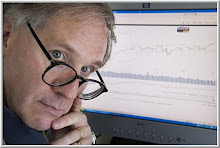.
9/11/2025 - A great framework for building or rebuilding your trading career is the SWOT analysis: Strengths, Weaknesses, Opportunities, Threats.
In keeping with the positive psychology perspective, I would suggest that the starting point for such an analysis is a clear, detailed assessment of your strengths and how those intersect with opportunities in the market. Then you can figure out how to navigate your weaknesses and the threats that markets pose.
What are the edges in the market that you see most clearly? What are the processes that you employ to best execute such edges? How do you know that the edges you perceive today will be likely to occur going forward?
As I suggested earlier, it's important to know your edges--and your ways of exploiting them--so well that you could deliver an effective elevator pitch to someone who might want to invest in your business. Tough question: If you can't effectively pitch your business to others, should you really be investing your time and money in what you're doing?
I've been conducting a detailed analysis of the breadth measures that I track, both overall market breadth for the equity indexes and breadth broken down by stock market sector. What has been eye-opening is that the edges I'm finding from the breadth measures are most pronounced over longer timeframes: 30-50 trading sessions.
I absolutely did not expect such a finding.
The implication is that I'm greatly underperforming the opportunity sets in markets by day trading. Even the active investing of many portfolio managers misses such edges.
Finding new and different edges in markets is the starting point for rebuilding our market careers.
====================
9/10/25 - An important principle that I emphasize with traders is "getting bigger by getting broader". By finding and exploiting new sources of edge in markets--new strategies, new time frames, new markets--you diversify your trading business and can make money in a variety of market conditions. When one strategy isn't working, others can kick in.
Many traders I've spoken with depend upon trending (and volatile) conditions to make money. If the market trades in a range, they can get chopped up pretty easily. Adding strategies that identify cycles in "choppy" markets and trading their short-term patterns can be quite profitable. Often, those rangebound conditions are actually corrective periods in longer-term directional moves. As I'll describe in an upcoming post, many breadth indicators are quite good at identifying those longer-term moves. Armed with that information, we can view the flattish corrections as opportunities to pounce on the next directional leg.
Another way of getting broader is to trade relative relationships and take the overall market out of the equation entirely. When we go long one market sector and short another and balance the positions for volatility, we have a way of making money regardless of what the overall market is doing, as long as our one sector outperforms the other.
When we have a diversified trading business, our income becomes more balanced; our overall P/L becomes less volatile; and we have a positive mind frame based on finding opportunities. So often, (re)building our business means expanding our business and investing time and energy to create multiple income streams.
======================
9/9/25 - This series of posts has particular relevance for those struggling with their trading and those who are ready to take their limited success to the next level of performance. It also has personal relevance, as I will be rebuilding my trading approach and process from the ground up--and will document each of my steps through my blog posts. The idea is to help traders use their setbacks as opportunities to create success.One of the first topics I tackled in my first book was manufacturing cars and trading success. The example I gave was of U.S. car makers who ran assembly lines at a speed that would ensure that flaws would not occur. That was contrasted with Japanese auto makers who intentionally sped up their assembly lines until problems occurred. Then they jumped at the opportunity to correct the flaws and run the whole process faster.
For the innovative automakers, things falling apart were a step in success.
If things have fallen apart in your trading--or if you have fallen short of your goals and potential--the idea is to embrace the lessons of your experience and use those to remake what you do.
The first step in (re) building your trading career is conducting a careful assessment of what you've been doing and an equally careful assessment of where opportunity can be found. That will be the focus of the next post. Along the way, I'll be sharing my lessons and helping you extract your own. Let's go!




